 W
WTemperate coniferous forest is a terrestrial habitat type defined by the World Wide Fund for Nature. Temperate coniferous forests are found predominantly in areas with warm summers and cool winters, and vary in their kinds of plant life. In some, needleleaf trees dominate, while others are home primarily to broadleaf evergreen trees or a mix of both tree types. A separate habitat type, the tropical coniferous forests, occurs in more tropical climates.
 W
WTemperate rainforests are coniferous or broadleaf forests that occur in the temperate zone and receive heavy rainfall.
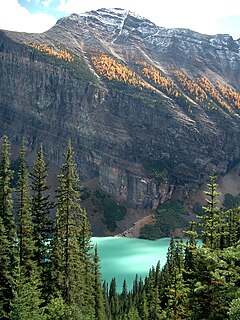 W
WThe Alberta Mountain forests are a temperate coniferous forests ecoregion of Western Canada, as defined by the World Wildlife Fund (WWF) categorization system.
 W
WThe Alberta–British Columbia foothills forests are a temperate coniferous forests ecoregion of Western Canada, as defined by the World Wildlife Fund (WWF) categorization system. This ecoregion borders Canada's taiga and contains a mix of subarctic forest and temperate forest species as a result. This makes the region an ecotone region, or a region that acts as a buffer between two other biomes.
 W
WThe Alps conifer and mixed forests is a temperate broadleaf and mixed forests ecoregion in central Europe. It extends along the Alps mountains through portions of France, Italy, Switzerland, Germany, Liechtenstein, Austria, and Slovenia. The ecoregion extends from the lower slopes of the Alps to its peaks, which include Mont Blanc, at 4,809 m (15,778 ft) the highest peak in the Alps.
 W
WThe Altai montane forest and forest steppe ecoregion covers patches of the subalpine forest belt on the Altai Mountains, crossing the border region where Russia, Kazakhstan, Mongolia and China meet. The region has high biodiversity, as it is located in transition zones between different ecoregions, altitudes, and climate zones. It is in the Palearctic realm, with a Cold semi-arid climate. It covers 35,199,998 km2 (13,590,795 sq mi).
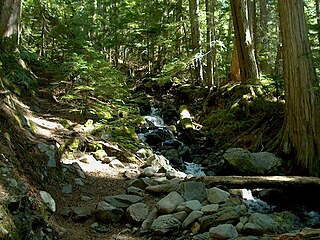 W
WBritish Columbia mainland coastal forests is a temperate coniferous forest ecoregion the Pacific coast of North America, as defined by the World Wildlife Fund (WWF) categorization system.
 W
WThe Caledonian Forest is the name given to the former temperate rainforest of Scotland.
 W
WThe Carpathian montane conifer forests, also known as Carpathian montane forests, is a temperate coniferous forests ecoregion in the Carpathian Mountains of the Czech Republic, Poland, Slovakia, Ukraine, and Romania.
 W
WThe Cascade Mountains leeward forests are a temperate coniferous forest ecoregion of North America, as defined by the World Wildlife Fund (WWF) categorization system.
 W
WThe Caucasus-Anatolian-Hyrcanian temperate forests is a composite ecoregion of southern Europe and West Asia, designated by the World Wildlife Fund as one of their Global 200 ecoregions, a list of priority ecoregions for conservation.
 W
WThe Central British Columbia Mountain forests is a temperate coniferous forest ecoregion in north-central British Columbia, as defined by the World Wildlife Fund (WWF) categorization system.
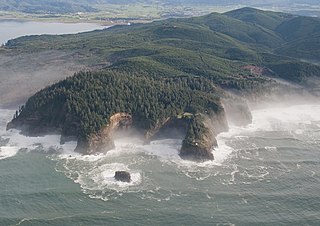 W
WThe Central Pacific coastal forests is a temperate coniferous forest ecoregion located in the Canadian province of British Columbia and the U.S. states of Oregon and Washington, as defined by the World Wildlife Fund (WWF) categorization system.
 W
WThe Da Hinggan-Dzhagdy Mountains conifer forests ecoregion covers the Greater Khingan Mountains of northern Manchuria (China), and across the border north into Russia where it follows the mountain ridge for another 500 km to the east. The mountain forests exhibit a floral community called "Daurian flora", a combination of the Siberian taiga to the north and the Manchurian floral types to the south. The eastern slopes are steep and drained by many rivers, the western slopes are gentler, and there are grasslands on some slopes. The ecoregion is in the Palearctic realm, with a Cold semi-arid climate. It covers 35,199,998 km2 (13,590,795 sq mi).
 W
WThe dinaric calcareous silver fir forests are an endemic vegetation type of the littoral Dinaric Alps, located in the Dinaric Mountains mixed forests ecoregion in southeastern Europe. Pure stands of dinaric calcareous silver fir forests appear on limestone escarpments in the montane zones of Orjen, Velebit, Biokovo and Prenj. They comprise one of the most interesting formations of Balkan vegetation types as the forests bear several rare plants and are of striking beauty. As a highly endemic and rare vegetation type of the dinarids, it needs protection.
 W
WThe Eastern Himalayan subalpine conifer forests is a temperate coniferous forests ecoregion which is found in the middle and upper elevations of the eastern Middle Himalayas, in western Nepal, Bhutan and northern Indian states including Arunachal Pradesh.
 W
WThe Elburz Range forest steppe ecoregion is an arid, mountainous 1,000-kilometer arc south of the Caspian Sea, stretching across northern Iran from the Azerbaijan border to near the Turkmenistan border. It covers 63,300 square kilometres (24,400 sq mi) and encompasses the southern and eastern slopes of the Alborz Mountains as well as their summits. The Caspian Hyrcanian mixed forests ecoregion, with its lush green mountainsides and plains that receive moisture from the Caspian Sea, forms this ecoregion's northern border. The vast Central Persian desert basins ecoregion forms its southern border.
 W
WThe Fraser Plateau and Basin Complex is an ecoregion, as defined by the World Wildlife Fund. It encompasses the middle reaches of the watershed of the Fraser River as it traverses the northern part of the Interior Plateau of British Columbia. The WWF ecoregion is similar in description to two of the ecoregions within Environment Canada's Montane Cordillera Ecozone: The Fraser Basin and the Fraser Plateau. Much of the Fraser Plateau is underlain by volcanic rocks which have steep escarpments along rivers and creeks and almost flat upper surfaces.
 W
WThe Helanshan montane conifer forests ecoregion covers an isolated, forested mountain range surrounded by desert and semi-arid basins. As such, it has been called a "mountain island in the sky", and supports endemic species of plants and animals. The region supports the endangered Helan Shan pika.
 W
WThe Hengduan Mountains subalpine conifer forests are a temperate forest in the Hengduan Mountains of southwestern China. The forests extend within the Jinsha and Yalong River valleys from approximately 32°N to 27°N. In addition, a portion of the Anning River valley and Mianmian Mountains near Lugu Lake support the subalpine conifer forests. This region covers northern Yunnan Province, western Sichuan Province, and the extreme eastern edge of the Tibet Autonomous Region.
 W
WThe Honshū alpine conifer forests ecoregion covers 4,400 square miles (11,000 km2) in the high-elevation mountains of central Honshū and the Oshima Peninsula of Hokkaidō, Japan. It is a temperate coniferous forest ecoregion in the Palearctic realm.
 W
WThe Khangai Mountains conifer forests ecoregion covers the northern slopes of the Khangai Mountains in central Mongolia. The cool, temperate forest supports a populations of elk, deer, wild boar, wolves, and brown bear. The diversity of plants and animals has benefited from the relative isolation and low human population of the area.
 W
WMediterranean conifer and mixed forests is an ecoregion, in the temperate coniferous forest biome, which occupies the high mountain ranges of North Africa. The term is also a botanically recognized plant association in the African and Mediterranean literature.
 W
WThe Middle Atlantic coastal forests are a temperate coniferous forest mixed with patches of evergreen broadleaved forests along the coast of the southeastern United States.
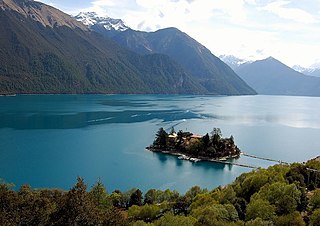 W
WThe Northeastern Himalayan subalpine conifer forests are a temperate coniferous forests ecoregion of the middle to upper elevations of the eastern Himalayas and southeast Tibetan Plateau. The ecoregion occurs in southeastern Tibet Autonomous Region, China, in northern and eastern Arunachal Pradesh, India, and extreme eastern Bhutan.
 W
WThe Northern Anatolian conifer and deciduous forests is a temperate coniferous forests ecoregion located in northern Anatolia, Turkey.
 W
WNorthern Cordillera forests is a taiga ecoregion that extends across the northern interior of British Columbia, southern Yukon, and a small area of the Northwest Territories as defined by the World Wildlife Fund (WWF) categorization system.
 W
WNorthern transitional alpine forests is a temperate coniferous forest ecoregion in the northwestern interior of British Columbia, as defined by the World Wildlife Fund (WWF) categorization system.
 W
WNorthwest Territories taiga is a taiga ecoregion located within the Canadian territories of Northwest Territories and Yukon. It is defined by the World Wildlife Fund (WWF) categorization system as inhabiting the Mackenzie River Valley, as well as the surrounding highlands in the southern portion of the valley.
 W
WThe Nujiang Langcang Gorge alpine conifer and mixed forests are a temperate coniferous forests ecoregion in Southwest China and northeastern Myanmar. The forests cover mountains and valleys in the western Hengduan Mountains and because of the extreme topography and relative remoteness, remain one of the best preserved habitats in China.
 W
WOkanagan dry forests is a temperate coniferous forest ecoregion in the Pacific Northwest of North America, as defined by the World Wildlife Fund (WWF) categorization system. It is closely associated with the Okanagan region of British Columbia and Washington.
 W
WPuget lowland forests is a temperate coniferous forest ecoregion the Pacific coast of North America, as defined by the World Wildlife Fund (WWF) categorization system.
 W
WThe Qilian Mountains Conifer Forests ecoregion is an ecoregion that consists of a series of isolated conifer forests on the northern slopes of the Qilian Mountain Range, on the northeast edge of the Tibetan Plateau in central China.
 W
WThe Qionglai-Minshan conifer forests are a World Wide Fund for Nature ecoregion in Southwest China. These forests are classified as temperate coniferous forests and are part of the Palearctic realm.
 W
WThe North Central Rockies forests is a temperate coniferous forest ecoregion of Canada and the United States. This region gets more rain on average than the South Central Rockies forests and is notable for containing the only inland populations of many species from the Pacific coast.
 W
WThe Sayan montane conifer forests ecoregion covers the mid-elevation levels of the Sayan Mountains, the high mountain range between the taiga of Siberia, Russia to the north, and the steppes of Mongolia to the south. The slopes of the mountains at the mid-altitudes are covered by Temperate coniferous forest. The ecoregion is in the Palearctic realm, with a cold semi-arid climate. It covers 35,741,835 km2 (13,800,000 sq mi).
 W
WThe Scandinavian coastal conifer forests or Norwegian coastal conifer forest is a Palearctic ecoregion in the temperate coniferous forests biome, located along the coast of Norway. Within it are a number of small areas with botanical features and a local climate consistent with a temperate rainforest.
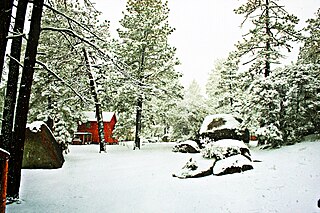 W
WThe Sierra Juárez and San Pedro Mártir pine–oak forests is an ecoregion, in the Temperate coniferous forests biome, that covers the higher elevations of the Sierra Juárez and Sierra San Pedro Mártir ranges, of the Peninsular Ranges, in the northern Baja California Peninsula of Mexico, near the border with California.
 W
WSouth Avalon-Burin oceanic barrens is a taiga ecoregion located within the Canadian province of Newfoundland and Labrador and the French overseas collectivity of Saint Pierre and Miquelon. It is defined by the World Wildlife Fund (WWF) categorization system as inhabiting the southern headlands of the Avalon and Burin Peninsulas along the southeastern coast of Newfoundland.
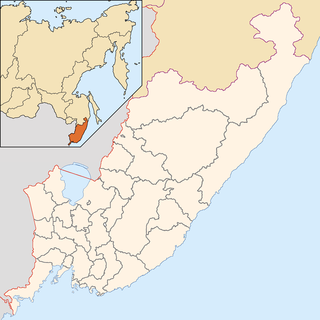 W
WThe temperate rainforests of the Russian Far East are within the Russian states of Primorsky Krai and Khabarovski Krai and contains the Sikhote-Alin mountain range. Found within the Russian Federation, this area is one of the most productive and diverse forests in the world and also contains one of the highest endangered species densities on Earth. While most temperate rainforests around the world have retained only a fraction of their historical range, these forests maintain the majority of their former range and almost all of their historical biodiversity. The region is also notable for having what has become the last remaining large tract of viable habitat for the critically endangered Amur tiger and Amur leopard.
 W
WThe Three Parallel Rivers of Yunnan Protected Areas is a UNESCO World Heritage Site in Yunnan province, China. It lies within the drainage basins of the upper reaches of the Yangtze (Jinsha), Lancang (Mekong) and Nujiang (Salween) rivers, in the Yunnan section of the Hengduan Mountains.
 W
WThe Tian Shan montane conifer forests ecoregion covers the "forest belt" of the Tian Shan mountains - generally the north-facing slopes that get enough moisture, and are warm enough, for trees to grow. This conifer belt is found mostly between 1,500 and 2,700 meters.
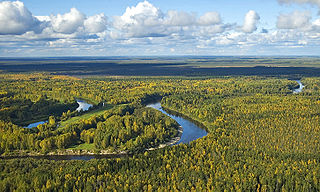 W
WThe West Siberian Plain, also known as Zapadno-sibirskaya Ravnina, is a large plain that occupies the western portion of Siberia, between the Ural Mountains in the west and the Yenisei River in the east, and by the Altay Mountains on the southeast. Much of the plain is poorly drained and consists of some of the world's largest swamps and floodplains. Important cities include Omsk, Novosibirsk, Tomsk and Chelyabinsk.
 W
WThe Western Himalayan subalpine conifer forests is a temperate coniferous forests ecoregion of the middle and upper elevations of the western Middle Himalayas of Nepal, India, and Pakistan.